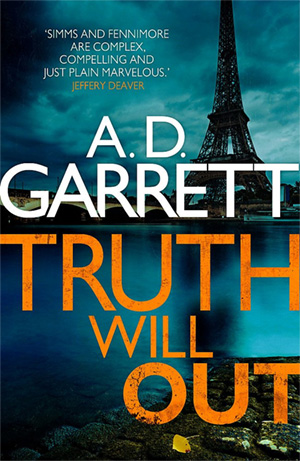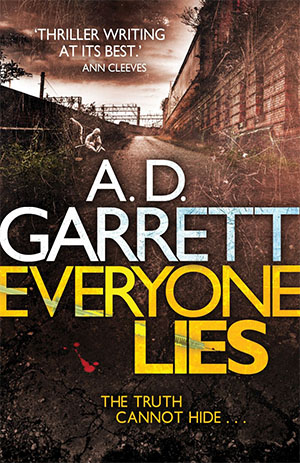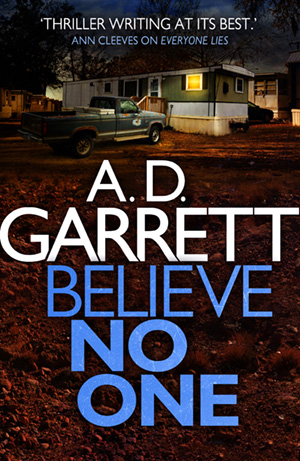A. D. Garrett

Introducing A. D. Garrett
A.D. Garrett is the pseudonym for novelist Margaret Murphy working in consultation with policing and forensics expert, Helen Pepper. I trained as a scientist and I’m a bit of a science geek, so I’ve always done a lot of background research — for instance I completed a year of a psychology degree to gain insights for one of my psychological novels! Working with Helen was highly satisfying for my inner geek, and also allowed me to delve into scientific spheres that I might otherwise have found difficult to penetrate.
I’ve published twelve psychological thrillers under my own name – both stand-alone and police series. In 2013, writing as A.D. Garrett, I began a new forensic series, featuring Professor Nick Fennimore and DCI Kate Simms.
Book #1 was Everyone Lies, which Ann Cleeves rated ‘thriller writing at its best’, was a bestseller, and both Everyone Lies and the sequel, Believe No One, garnered coveted starred reviews from Publishers’ Weekly. Jeffery Deaver commented, ‘A.D. Garrett has done for Manchester what The Wire did for Baltimore. And Simms and Fennimore are complex, compelling, and just plain marvellous.’ Truth Will Out, the third in the series, answers some of the questions raised about Prof Fennimore’s daughter, and the murder of his wife, and uncovers some of the mysterious Josh’s secrets, too.
Helen Pepper is a Senior Lecturer in Policing at Teesside University in the UK. She has been an analyst, Forensic Scientist, Scene of Crime Officer, CSI, and Crime Scene Manager. As a Crime Scene Investigator, she examined over 3000 crime scenes, ranging from thefts and fires to rapes and murders. Later, as Crime Scene Manager, she supervised CSIs in over 50 major incidents. She is a member of the Chartered Society of Forensic Sciences and has a wealth of experience in the investigation of all crime types, from simple thefts to murders and terrorism. An author in her own right, Helen has co-authored, as well as contributed to, professional policing texts. Her expertise is in great demand with crime writers: for several years she was a judge for the CWA’s Non-Fiction Dagger award and she was a long-standing Forensic Consultant on both the Vera and Shetland TV series.
Books by A. D. Garrett
Everyone Lies
Everyone Lies Fennimore & Simms book 1 DCI Kate Simms is on the fast track to nowhere. Five years ago, she broke all the rules to help Professor Nick Fennimore after his wife and daughter disappeared, and she’s been clawing her way back from a demotion ever since. Nick Fennimore, one-time scientific advisor to the […]
READ MORE >Believe No One
Believe No One Fennimore & Simms book 2 DCI Kate Simms is on assignment in the United States with St Louis PD, reviewing cold cases, sharing expertise. Forensic expert Professor Nick Fennimore follows her, keen to pick up where they left off after their last case – but the last thing Simms needs is Fennimore […]
READ MORE >Truth Will Out
Truth Will Out (Fennimore & Simms book 3) A mother and daughter are snatched on their drive home from a cinema. The crime has a number of chilling similarities to a cold case Professor Nick Fennimore had been lecturing on. Then Fennimore begins receiving taunting messages – is he being targeted by the kidnapper? Meanwhile, […]
READ MORE >

